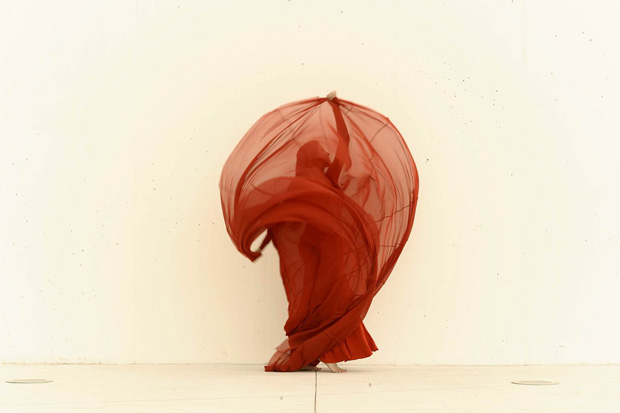
© David Ruano. (Click image for larger version)
IBERIAN SUITE: global arts remix
Kennedy Center Festival – details
www.kennedy-center.org
Compañía María Pagés
Utopía
11 March 2015
www.mariapages.com
The Kennedy Center’s “IBERIAN SUITE: global art remix“ brought a double treat for the Washington area’s flamenco aficionados, presenting Spain’s two celebrated companies, Ballet Flamenco Sara Baras and Compañía María Pagés, to the stage of the Eisenhower Theater in performances within a day of each other.
If Sara Baras adheres to the traditional flamenco approach and style, as reflected in her “Voces, Suite Flamenca,” a program conceived as a tribute to the flamenco greats of the past, María Pagés infuses the essence and spirit of flamenco with modern sentiment.
For Pagés, flamenco is a constantly evolving tradition – an art form without limits and boundaries, never static or dormant. During her long, distinguished career, she shaped and adapted flamenco to present-day sensibilities and shared her personal artistic vision of the art with contemporary audiences around the world. In this creative process she teamed up with some of the greatest performing artists of today, including Mikhail Baryshnikov and Plácido Domingo.
In her latest creation, Utopía (2011), which her company performed as part of the Iberian festival, Pagés took inspiration from the creative legacy of Brazilian architect Oscar Niemeyer (1907-2012), a prominent figure in the development of modern architecture.
Utopía was the result of nearly two years of research and collaboration. Pagés conjured the scenic space to house her choreography, designed the costumes and worked with musicians Rubén Levaniegos and Fred Martins on the original score for the production.
Niemeyer was recognized for his use of abstract shapes and free-flowing curves and Pagés incorporated his curvilinear aesthetics into the production’s ingenious décor, which was dominated by two long flexible tubes suspended from the ceiling. In the course of the piece, these floating poles created a fascinating array of shapes and patterns alluding to nature’s silhouettes: ocean waves, mountain hills, sand dunes; and the atmospheric lighting effectively mixed the darkness and the light, beautifully accentuating the futuristic stage sceneries.
Accompanied by live music, Utopía unfolded in a dreamy, unhurried manner, yet felt provocative and endlessly theatrical. This 80-minute program was an ensemble piece rather than a one-woman show, giving the company’s superb dancers and musicians countless moments to shine. Shine they did, especially the excellent Fred Martins, an expert guitarist and a soulful singer, and Sergio Menem, a captivating, skillful cellist. The six-member corps de ballet, dressed in dark, earthy garb, left a strong impression with their impeccable, spirited performance.
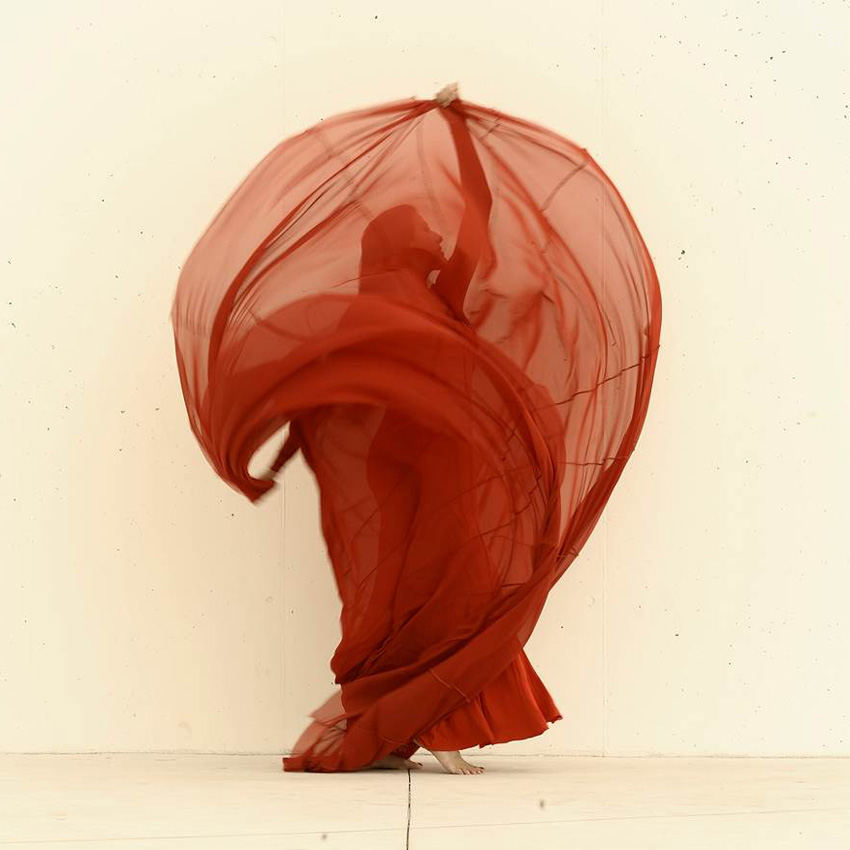
© David Ruano. (Click image for larger version)
But the show’s most memorable and visually effective turns were rendered by Pagés herself. There was a slick and stately farruca in which Pagés, in a black body-hugging suit, stomped the floor with her feet in a perfectly modulated and precise manner while unraveling her gorgeous arms in a flurry of mesmerizing patterns. Her monologue in farruca was accompanied by the solemn sounds of cello, courtesy of Sergio Menem.
If the costumes for the ensemble left me unmoved, I was truly impressed by two dresses that Pagés donned for her solo numbers. There was a stunning scarlet gown with a lengthy skirt, which created a huge circle around her. During her meditative, yet emotionally intense solo, which felt like a mournful elegy, the dress became part of the dance itself as Pagés fervently manipulated the flowing layers of the gown, spreading them like wings or wrapping herself in the dress’s expanse from head to toe to form a poignant, statue-like figure.
For the finale, Pagés wore a lavish black-and-white bata de cola. In the beginning, she stepped into a pool of light and began her number in complete silence, her feet tapping a slow, gentle beat and her hands curling and uncurling with languorous suppleness. Just as in her previous solo, the focal point of the choreography here was the dress. It seemed as though Pagés put all her concentration and energy into taming the long tail of her gown, holding, spinning, kicking and lifting its ruffled volume as she moved around the stage. Then the music began. As the guitars trembled with increasing ardor and the clapping grew feverish, she spiraled and bent her body into a multitude of sinuous arches, her feet flying into a frenzied vortex and her hands charting more and more delicate curves.
It all ended with a hushed image. In the show’s final moment, as the lights darkened, Pagés turned her back to the audience and raised her poetic arms in one final swan-like arabesque, leaving the fully-packed house shouting, applauding and cheering in a riot of heartfelt approval and ecstatic appreciation.






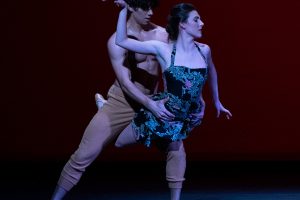
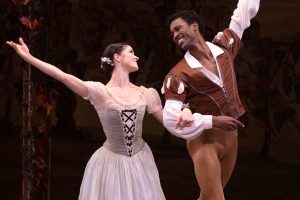


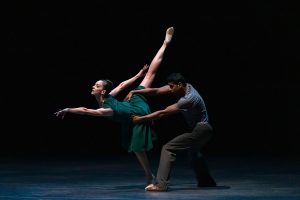




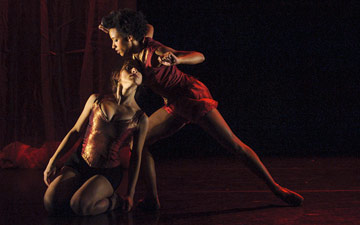

You must be logged in to post a comment.